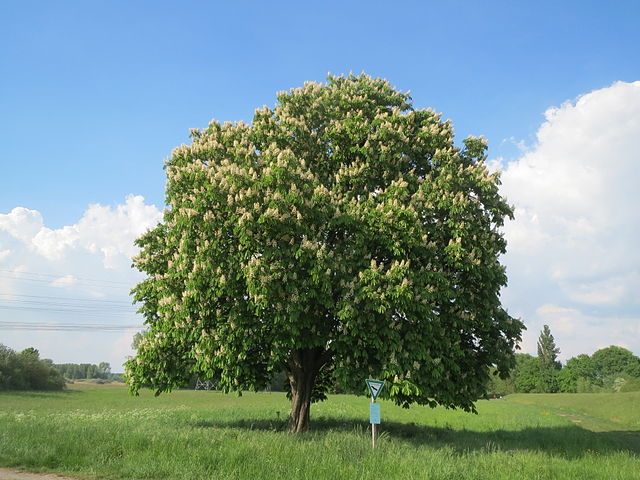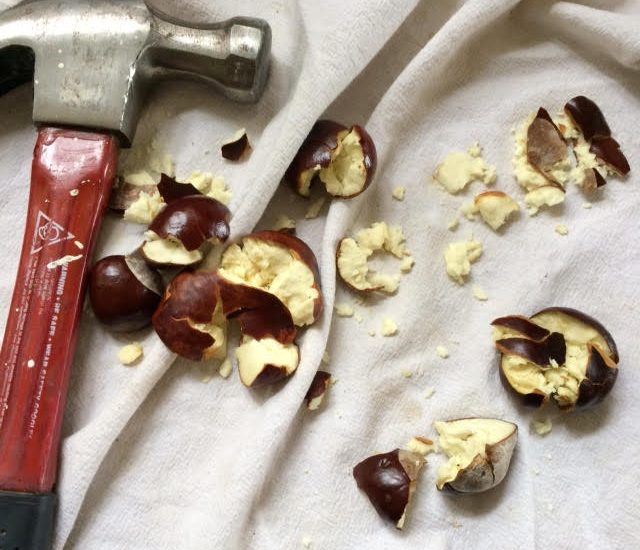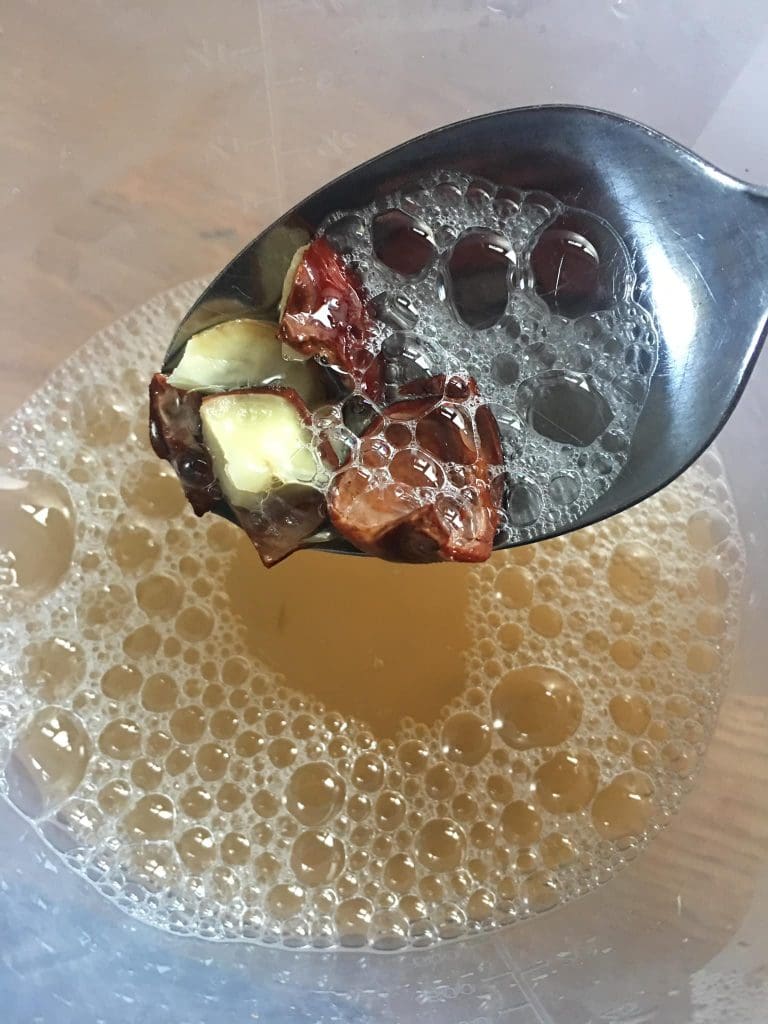As an avid forager, I am always on the lookout for ways to utilize the natural resources around me. One of my favorite finds during the autumn season is horse chestnuts, also known as conkers. These shiny nuts may not be edible, but they have a hidden secret – they are rich in saponins, making them perfect for making handmade soap.
In this article, I will guide you through the step-by-step process of foraging and creating your own horse chestnut soap.
Get ready to embark on a fun and eco-friendly adventure!
An Introduction to Horse Chestnuts and Soap Making
The Magic of Horse Chestnuts
Horse chestnuts, scientifically known as Aesculus hippocastanum, are abundant in temperate areas of North America, Europe, and Asia. While they are not suitable for consumption, these nuts have high levels of saponins, which are natural compounds with detergent-like properties. This makes horse chestnuts a fantastic ingredient for homemade soap.
The Appeal of Handmade Soap
In recent years, there has been a growing interest in eco-friendly and sustainable alternatives to commercial cleaning products. Handmade soap offers a great solution, as it is free from harsh chemicals and can be customized with natural ingredients. Making your own soap allows you to have control over the ingredients, ensuring a safe and environmentally friendly product for your family. Some commercial soaps can contain up to 27 different chemicals, something that, quite frankly, I find a little scary.
Foraging for Horse Chestnuts

The Best Time for Foraging
Autumn / Fall is the perfect time to venture out and collect horse chestnuts. The nuts start falling from the trees in September and October, usually after the first few autumn rains. Look out for horse chestnut trees in parks, woodlands, or even in your neighborhood. They are easy to identify with their distinctive palmate leaves and spiky green husks containing the nuts.
Harvesting Horse Chestnuts
When you come across a horse chestnut tree, take a moment to observe the ground beneath it. You will likely find a carpet of fallen nuts. Take care not to collect any chestnuts that are still encased in their spiky husks, as they are not yet ripe. Instead, gather the mature nuts that have fallen and are easily accessible.
Tools for Collecting
To gather horse chestnuts, all you need is a bag or basket to hold them. You may want to wear gloves if you have sensitive skin, as the nuts can cause irritation for some individuals. It’s also a good idea to bring along a small knife or pruners to remove any remaining husks from the nuts, although this step is not necessary for soap making.

Find our Horse Chestnut Foraging Guide Here
Preparing the Horse Chestnuts

Removing the Husks
Once you have collected your horse chestnuts, it’s time to prepare them for soap making. Start by removing the spiky green husks, revealing the smooth brown nuts inside. You can do this by hand or with the help of a small knife. Take caution not to cut yourself during this process, as the husks can be prickly.
Crushing the Chestnuts
To release the saponins from the horse chestnuts, you will need to crush them into small pieces. There are several methods you can use, depending on the tools you have available. One approach is to place a chestnut under a tea towel and use a hammer to gently crush it. This method allows you to control the force and prevent the nuts from shattering.
Grinding the Chestnuts
After crushing the chestnuts, you can further break them down into a fine pulp by using a blender or a coffee grinder. This step is optional but recommended if you prefer a smoother texture for your soap. Simply add the crushed chestnuts to the blender or grinder and pulse until you achieve the desired consistency. Personally I pop them in a blender with some water to help them blend up nicely – use a sturdy blender as these chestnuts can be quite firm.
Making the Horse Chestnut Soap Solution

Soaking the Chestnuts
Now that you have prepared the chestnuts, it’s time to transform them into soap. Place the crushed or ground chestnuts into a heat-resistant container, such as a Pyrex measuring cup or a glass jar. Add hot water to cover the chestnuts, using a ratio of approximately 1 part chestnuts to 2 parts water.
Steeping for Saponins Extraction
Allow the chestnuts to steep in the hot water for at least 30 minutes. This steeping process allows the saponins to be extracted from the chestnuts and infused into the water, creating a soap solution. The longer the steeping time, the more concentrated the soap solution will become.
Straining the Soap Solution
After the steeping period, strain the soap solution to remove any solid particles or larger chestnut pieces. You can use a fine-mesh sieve, muslin or cheesecloth for this step, ensuring that the liquid passes through while capturing any remaining solids. The resulting liquid will have a milky appearance and a subtle nutty fragrance.
Using and Storing the Horse Chestnut Soap
Laundry Washing with Horse Chestnut Soap
To use the horse chestnut soap for laundry washing, simply add the desired amount of soap solution to your washing machine’s detergent compartment or directly to the drum. As a general guideline, start with approximately 1/4 to 1/3 cup of soap solution per wash load. Adjust the amount based on your preferences and the size of the load.
Storing the Soap Solution
If you have leftover soap solution, you can store it in a sealed container in the refrigerator for up to a week. This allows you to make a larger batch of soap solution and use it over multiple laundry cycles. Before using the stored soap solution, give it a gentle shake to ensure that the saponins are evenly distributed. Or freeze it in bags in the amount you would use in a wash and take it out to defrost before popping in for that wash.
Additional Tips and Considerations
Scenting the Soap Solution
While horse chestnut soap has a natural nutty fragrance, you can enhance the scent by adding a few drops of your favorite essential oil. Lavender, tea tree, or citrus oils are popular choices that can provide a pleasant aroma to your laundry. Simply mix the essential oil with the soap solution before using it in your washing machine.
Avoiding Bleaching Effects
It’s important to note that horse chestnut soap may have a slight bleaching effect on dark or colored fabrics. To prevent any potential discoloration, you can either test the soap solution on a small, inconspicuous area of the fabric or avoid using it for dark-colored items. For whites or heavily stained garments, pre-soaking in the soap solution can help remove tough stains.
Experimenting with Different Soap Concentrations
Feel free to experiment with the concentration of the soap solution to find the right balance for your laundry needs. If you find that the soap is not providing enough cleaning power, you can increase the amount used per wash load. Conversely, if you notice any residue or excessive foaming, you can reduce the concentration.
In Conclusion
Making your own soap from horse chestnuts is a rewarding and eco-friendly alternative to commercial laundry detergents. By harnessing the natural saponins found in these abundant nuts, you can create a gentle and effective cleaning solution for your clothes. Enjoy the process of foraging, preparing, and using your homemade horse chestnut soap, and revel in the knowledge that you are reducing your environmental impact while achieving clean and fresh laundry.
Happy soap making!
Extras from the Foragers
I make masses of this stuff each autumn and store it bagged in the freezer, it typically lasts me half a year but I guess I could make more for the freezer to last the rest of the year. don’t scent my horse chestnut soap.
I’ve noticed since removing scented laundry detergent that my awareness of smells or ability to smell has become much more acute, I know it sounds weird but it’s just something I’ve noticed more recently. And it’s helped me with my foraging, when I’m out in the woods I can often smell mushrooms before finding them, along with other things like mugwort & three-cornered leek. Has this happened for you?






Leave a Reply
You must be logged in to post a comment.